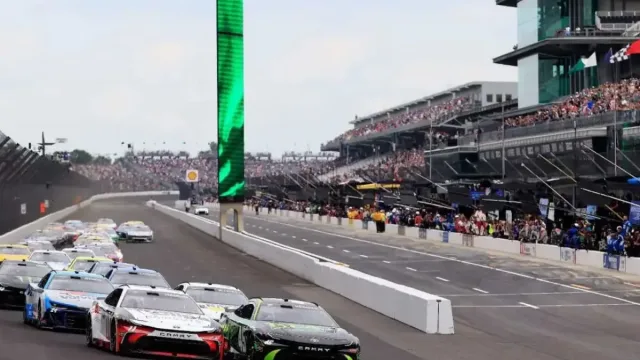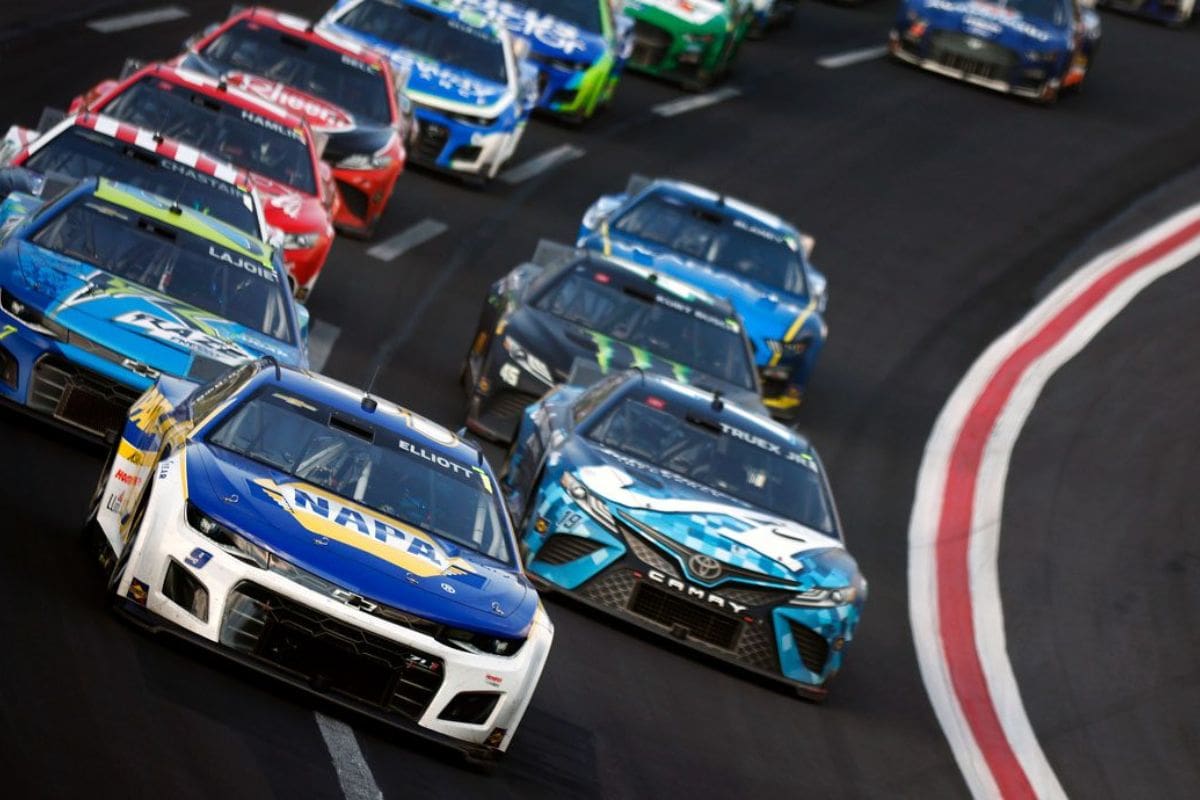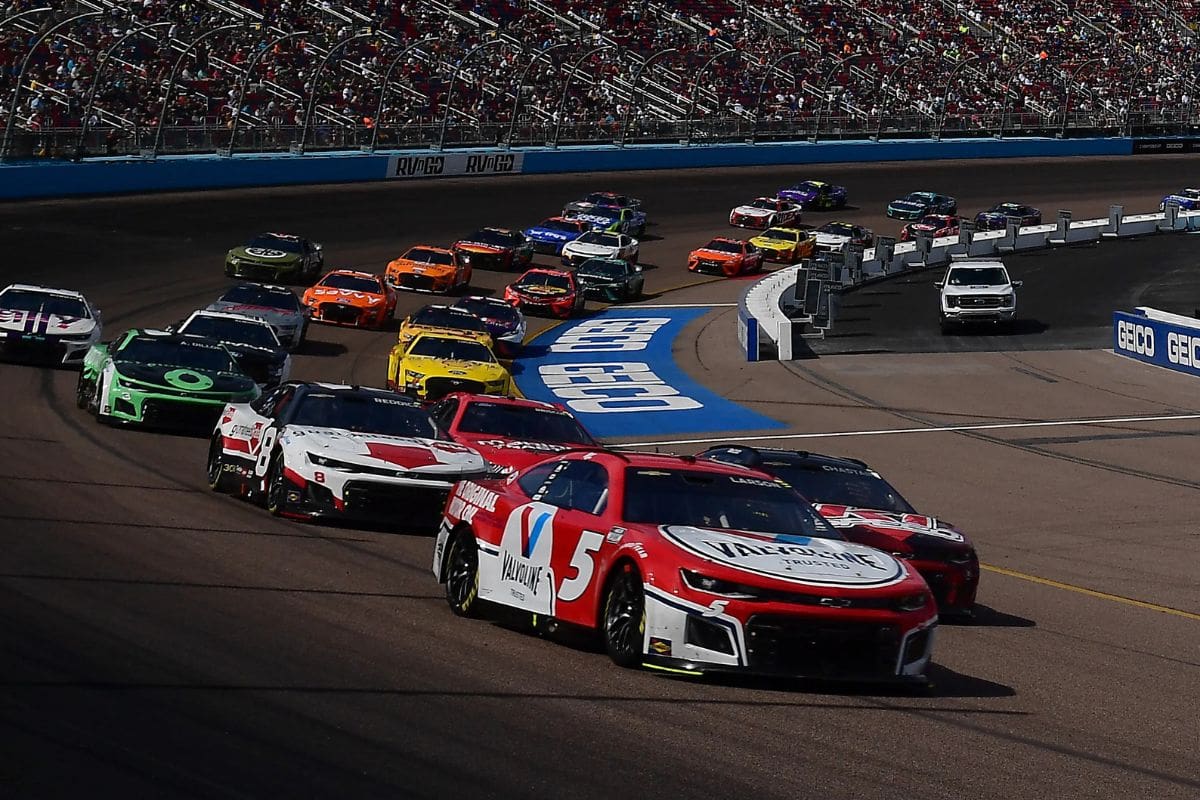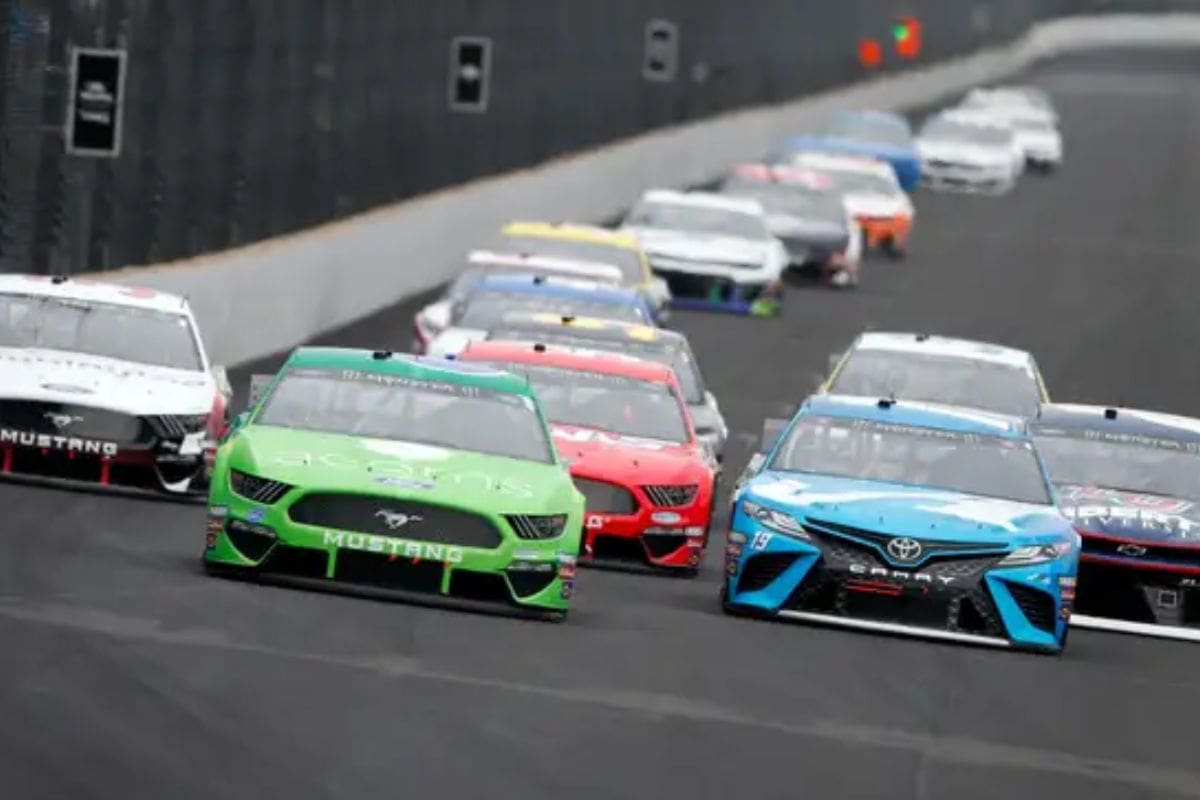NASCAR Loses 32 Billion Dollars Partner: NASCAR’s recent loss of GEICO as a partner after 15 years, amounting to $32 billion, raises critical questions about the organization’s financial sustainability and future sponsorship strategies. This development highlights a troubling trend of declining partnerships and intensifies concerns regarding the absence of a primary title sponsor since 2020. As NASCAR grapples with these challenges, understanding the implications for its revenue model and competitive integrity becomes increasingly crucial.
Key Highlights
- NASCAR’s financial stability is hampered by GEICO’s departure, a significant partner contributing $32 billion over 15 years.
- The absence of major sponsors raises concerns about operational funding and competitive balance within the sport.
- Upcoming expiration of deals with three premier partners in 2024 amplifies urgency to secure new sponsorships.
- NASCAR’s shift towards television and streaming revenue aims to compensate for declining traditional sponsorships.
- Diversifying the sponsorship portfolio and enhancing relationships with existing partners are crucial for future financial sustainability.
NASCAR’s Shift Away from Title Sponsors
NASCAR’s evolving financial landscape has marked a notable departure from its historical reliance on title sponsors. Traditionally, entities such as Nextel, Monster, and Winston provided substantial financial backing that facilitated the growth and visibility of the sport. These partnerships not only defined the branding of individual racing series but also contributed greatly to NASCAR’s comprehensive revenue stream.
However, as the sport shifted to the NASCAR Cup Series in 2020, this model saw a dramatic change, as the premier series has since operated without the support of a singular title sponsor.
The recent severance of ties with GEICO, a long-standing partner, highlights this trend and raises critical questions about NASCAR’s financial sustainability. The absence of a title sponsor not only diminishes the branding consistency that fans have come to expect but also poses challenges in securing the necessary funding to maintain operational excellence and competitive parity among teams.
As NASCAR forges ahead, it faces the imperative of rethinking its financial strategies in an era where traditional sponsorship models are rapidly evolving.
This shift reflects broader industry trends where brands are increasingly cautious about investing in sports sponsorships, opting instead for diversified marketing strategies that may not include title sponsorships.
NASCAR’s New Business Model and TV Revenue
As traditional sponsorship models falter, NASCAR is increasingly turning to television revenue and emerging streaming platforms to sustain its financial health. The recent $7.7 billion TV deal, spanning the next seven years, represents a notable shift in NASCAR’s business strategy. This agreement not only provides a reliable revenue stream but also reflects the sport’s adaptation to modern viewing habits.
The shift to a television-centric model is driven by several key factors:
- Diminished Sponsorship Support: With high-profile partners reassessing their commitments, NASCAR must fill the financial gaps left by departing sponsors.
- Evolving Consumer Preferences: The rise of streaming services offers NASCAR an opportunity to engage a younger audience, who increasingly consume content on digital platforms rather than traditional cable.
- Increased Competition: Other sports leagues have successfully utilized TV and streaming revenue, setting benchmarks for NASCAR to aspire to as it seeks to maintain its competitive edge.
While this new approach may stabilize NASCAR’s finances in the short term, it raises concerns about long-term viability, especially if trust with iconic partners continues to erode.
The balance between maximizing revenue and nurturing key relationships will be essential as NASCAR navigates this uncharted territory. Ultimately, the effectiveness of this pivot will depend on the sport’s ability to innovate and adapt to the needs of its audience while retaining the loyalty of its sponsors.
GEICO’s Departure After 15 Years
Marking the end of an era, GEICO’s recent decision to part ways with NASCAR after 15 years highlights the challenges facing the sport’s sponsorship landscape. Initially brought in following NASCAR’s 2020 brand revamp, GEICO joined a cadre of key sponsors, including Busch Beer, Coca-Cola, and Comcast’s Xfinity, to fortify the sport’s financial framework.
.@GEICO will end its premier partnership with @NASCAR after this season, marking the first time the racing circuit will lose one of the top-tier sponsors from the system it started in 2020. https://t.co/f89f5oEBol
— Adam Stern (@A_S12) September 20, 2024
As the official insurance provider, GEICO’s sponsorship was crucial to NASCAR’s operational sustainability, contributing to a diversified revenue stream that was vital for its growth.
The decision to sever ties reflects broader trends affecting sponsorship dynamics in sports. As economic conditions fluctuate and consumer behaviors evolve, companies reassess their marketing strategies and budget allocations. The departure of a prominent partner like GEICO could signal a tightening of available sponsorship dollars, compelling NASCAR to navigate an increasingly competitive market for corporate partnerships.
Moreover, GEICO’s long-standing association with NASCAR provided both brand visibility and engagement opportunities, fostering a loyal fanbase. The implications of losing such a notable sponsor might extend beyond immediate financial impacts, potentially altering the perception of the NASCAR brand in the eyes of future partners.
“The partnership between NASCAR and GEICO has demonstrated the immense value and weekly excitement that two consumer-driven brands can create, and we are proud of the extraordinary brand value, exposure, and growth opportunities we’ve built together.” – a NASCAR executive
As NASCAR contemplates its next steps in securing sponsorships, the challenge will be to not only replace GEICO but also to attract new partners that align with the sport’s evolving identity. This crossroads serves as a critical moment for NASCAR, necessitating creative strategies to guarantee financial stability and continued growth amidst an uncertain economic landscape.
Impact of Losing a Key Sponsor
With GEICO’s departure, the consequences for NASCAR extend far beyond the immediate loss of financial support. This split not only disrupts a long-standing partnership but also hampers the intricate web of sponsorships and promotional opportunities that have defined the series.
GEICO’s presence was integral to NASCAR’s branding approach, evidenced by several critical factors:
- Financial Investment: GEICO ranked among the top spenders during FOX and NBC broadcasts, thereby directly influencing NASCAR’s revenue streams. The loss of this capital could hinder operational budgets and overall profitability.
- Brand Visibility: The GEICO restart zone, a unique feature that connected viewers with the brand, improved viewer engagement during races. Its absence may diminish the creative marketing strategies NASCAR employs to retain and grow its audience.
- Event Sponsorships: GEICO’s sponsorship of marquee events, including the Talladega races and camping grounds at Daytona, greatly heightened the profile of these competitions. Without such sponsorships, NASCAR risks losing the allure and financial backing that these events provide.
Furthermore, rumors of Xfinity potentially exiting as a title sponsor for the alternate division racing series further exacerbate these concerns. The cumulative effect of these departures could fundamentally alter NASCAR’s financial landscape, necessitating a tactical pivot to secure future partnerships.
NASCAR’s Sponsorship Worries for 2024
The departure of GEICO has raised considerable concerns for NASCAR as it approaches 2024, particularly regarding its ability to secure and maintain sponsorships. The recent history of sponsorship dynamics within NASCAR highlights the precarious nature of its financial landscape.
With Comcast’s partnership as the title sponsor of the Xfinity Series since 2015 under scrutiny, uncertainty looms over whether they will extend their commitment beyond year-to-year negotiations. This shift towards a less stable sponsorship model could further exacerbate NASCAR’s financial vulnerabilities.
Moreover, the urgency of the situation is amplified by the impending expiration of existing deals with three premier partners in 2024. In 2019, NASCAR sought $15-20 million from these partners, a figure that may become increasingly difficult to justify amid a shifting economic climate and evolving advertising strategies.
The loss of GEICO, a considerable contributor to NASCAR’s revenue stream, not only diminishes immediate funding but also raises questions about the league’s attractiveness to potential new sponsors.
Without effective strategies to attract and secure sponsorships, NASCAR risks further destabilizing its financial foundation as it heads into 2024 and beyond.
News in Brief: NASCAR Loses 32 Billion Dollars Partner
The departure of GEICO, a notable partner for 15 years, highlights critical vulnerabilities in NASCAR’s financial structure. The absence of a primary title sponsor since 2020 exacerbates the challenges of attracting new partnerships. As NASCAR confronts these sponsorship issues, the need for creative revenue strategies becomes increasingly urgent. Without effective measures to diversify income and secure new sponsors, the integrity and financial stability of the sport may be at considerable risk in the coming years.
ALSO READ: NASCAR Overtakes Formula 1: Breaking Records and Expectations



